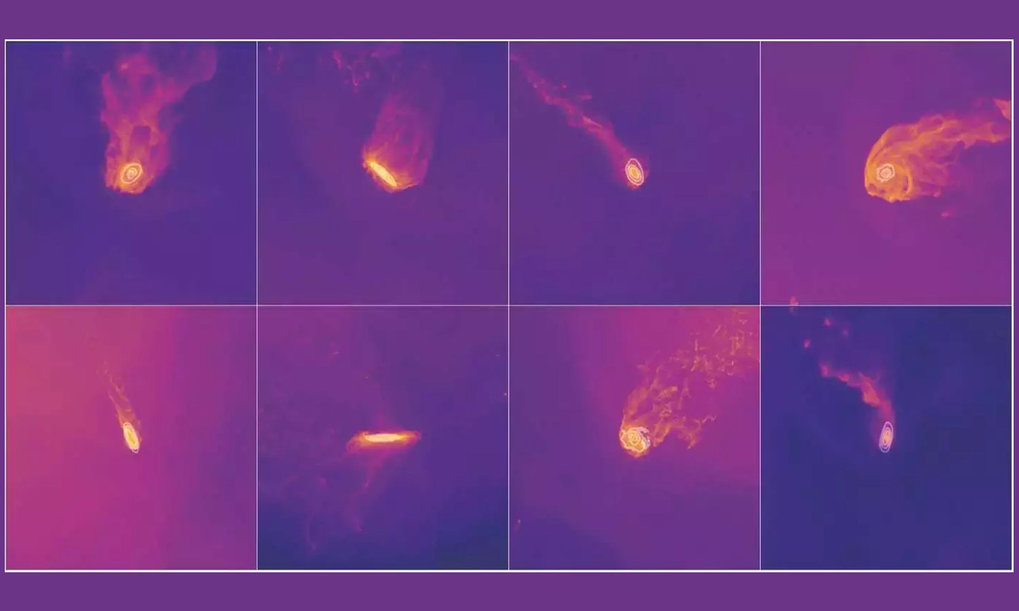In the Citizen Science project “Jellyfish Galaxies,” interested parties can help research the history of these cosmic bodies.
Eight examples of jellyfish galaxies. These images will be submitted to the participants of the new Zooniverse project for their classification.
Galaxies like our Milky Way, made up of millions, billions, or even hundreds of billions of stars, are the building blocks of the universe on the large scales. They cluster into galaxy clusters as thousands of galaxies move through the thin, hot gas between galaxies. As low as the density of this gas is, it is enough to allow galaxies to move at high speeds to feel a kind of “headwind”. The gas in the galaxy can be “blasted” – similar to a biker whose hair is blown backwards. What remains is a galaxy reminiscent of a jellyfish – with a “body” made of stars and tentacles made of gas.
Annalisa Pillepich and her team at the MPI Institute for Astronomy are using computer simulations to research the physical processes involved in the formation of jellyfish galaxies. To do this, they are programming a model universe that follows the same physical laws as our world. Stars and galaxies arise, interact with each other, and evolve further. For each of these hypothetical galaxies, its entire history can be reconstructed.
But in order to be able to study simulations of jellyfish galaxies, the research team first has to figure out which of the innumerable galaxies are jellyfish. The problem of pattern recognition is difficult for a computer to solve, while it is relatively easy for the human brain thanks to its excellent ability to recognize patterns. This is why people have to decide which galaxies look like jellyfish in the simulation.
Teamwork in the search for jellyfish galaxies
here comes Animal World In the game, the world’s largest and most popular citizen science platform. As the simulations generate massive amounts of data, thousands of volunteers work together on the “Jellyfish Galaxies” project to view a total of 38,000 images. Each of these shows a particular galaxy from a random angle, as well as other gas and galaxies in the region if applicable. Participants decide whether or not that galaxy resembles a jellyfish. The Zooniverse platform provides instructions on how to spot jellyfish galaxies and comments on top-ranked images. Since each galaxy is evaluated by at least twenty people in the course of the project, ambiguous cases can be filtered out.
For jellyfish galaxies identified, Annalisa Bilibich and her team reconstructed how they appeared, how they evolved — and what happened differently with galaxies that don’t look like jellyfish.
The Jellyfish Galaxies project is available in English, German and Everett.

“Total coffee aficionado. Travel buff. Music ninja. Bacon nerd. Beeraholic.”






More Stories
How did life begin on Earth? Munich researchers find important clues
How did life begin on Earth? Munich researchers find important clues
Everything related to prevention and treatment